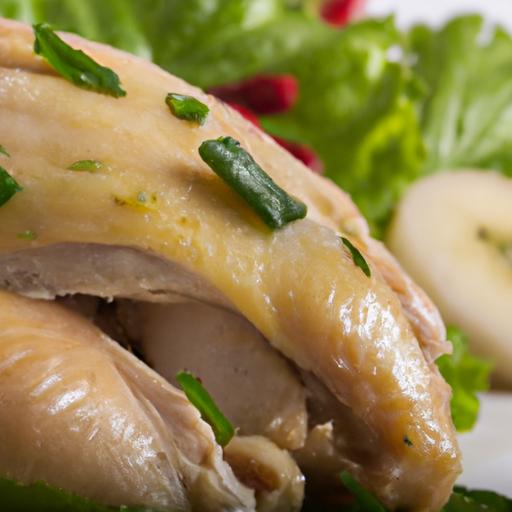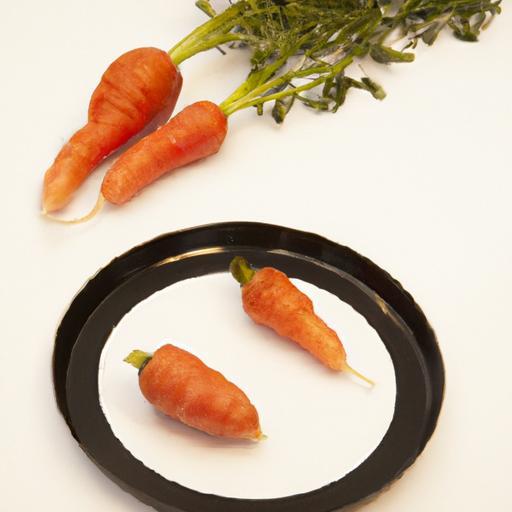Beneath the humble exterior of a crisp, orange carrot lies a world of flavor waiting to be unlocked. While raw carrots offer a refreshing crunch and subtle sweetness, it’s through the alchemy of cooking that their taste truly unfolds-revealing deeper, richer, and sometimes surprising notes. In “Flavor Unveiled: How Cooking Transforms Carrot Taste,” we dive into the science and art behind this transformation, exploring how heat, time, and technique coax out the carrot’s hidden complexities. Join us on a savory journey that turns a simple root vegetable into a symphony of flavor.
Flavor Unveiled: How Cooking Transforms Carrot Taste reveals the magical chemistry that elevates simple carrots into a symphony of natural sweetness and depth. As the heat caresses their cellular walls and time dances in the pan, carrots undergo a remarkable metamorphosis, unlocking sugars and complex flavor compounds that make every bite a celebration of earth’s bounty.
Prep and Cook Time
- Preparation: 10 minutes
- Cooking: 30 minutes
- Total Time: 40 minutes
Yield
Serves 4 as a side dish
Difficulty Level
Easy to Medium
Ingredients
- 1 lb (450g) fresh carrots, peeled and sliced diagonally into 1/4-inch pieces
- 2 tbsp unsalted butter
- 1 tbsp olive oil
- 1 tbsp brown sugar
- 1/2 tsp ground cinnamon
- 1/4 tsp freshly ground black pepper
- 1/2 tsp sea salt, or to taste
- 2 tbsp fresh orange juice
- 1 tsp finely grated orange zest
- 2 tbsp chopped fresh parsley, for garnish
Instructions
- Prepare the carrots: Rinse and peel the carrots. Slice them diagonally into uniform 1/4-inch pieces to ensure even cooking and maximum surface exposure to heat.
- Heat the fat: In a large non-stick skillet, combine 2 tbsp unsalted butter and 1 tbsp olive oil over medium heat. The blend of butter and oil prevents burning while adding rich flavor.
- Sauté the carrots: Add the carrots to the pan once the butter mixture is hot but not smoking. Stir to coat evenly, then let cook undisturbed for 3 minutes. This initial sear encourages caramelization, the key step in unlocking sweetness.
- Season and sweeten: Sprinkle 1 tbsp brown sugar and 1/2 tsp sea salt over the carrots. Toss gently. The brown sugar amplifies natural sugars through Maillard reactions and gentle caramelization.
- Add spices and flavors: Stir in 1/2 tsp cinnamon and 1/4 tsp black pepper to layer warm, aromatic notes that complement carrot’s earthiness without overpowering it.
- Introduce orange: Pour 2 tbsp fresh orange juice and add 1 tsp orange zest. The citrus brightens the dish while the acidity balances the sweet and savory components.
- Cover and simmer: Reduce heat to low and cover the skillet. Let the carrots gently steam for 15-20 minutes, stirring occasionally to prevent sticking. This slow cooking softens the fibers and allows sugars to further develop deep, luscious flavors.
- Finish and garnish: Remove the lid, increase heat to medium, and cook uncovered for an additional 5 minutes to evaporate excess moisture, concentrating flavor and giving a slight glaze.
- Plate and serve: Transfer carrots to a serving dish and garnish with fresh parsley for a burst of color and freshness.
Tips for Success
- Even slicing matters: Uniform pieces ensure consistent cooking and caramelization, which unlocks that perfect natural sweetness.
- Patience is key: Avoid rushing the simmering phase. Low, slow heat lets the sugars develop fully without burning, creating a rich, buttery glaze.
- Substitute flavors: For a different twist, try swapping cinnamon for smoked paprika or adding minced garlic in the early sauté stage.
- Advance prep: Cooked carrots can be refrigerated for up to 3 days and gently reheated with a splash of orange juice to refresh flavors.
- Texture balance: For added crunch, sprinkle toasted pecans or walnuts just before serving.
Serving Suggestions
This caramelized carrot dish shines as an elegant side to roasted poultry or grilled fish. For a comforting vegetarian plate, pair it with creamy mashed potatoes or a warm quinoa salad. Garnish with chopped fresh parsley or a few sprigs of thyme to add fresh aromatic intrigue. A drizzle of honey or a light brush of browned butter can further amplify the natural sweetness and glossy finish.

| Nutrition (per serving) | Amount |
|---|---|
| Calories | 120 kcal |
| Protein | 1.5 g |
| Carbohydrates | 15 g |
| Fat | 7 g |
To deepen your culinary knowledge, check out our Ultimate Guide to Vegetable Roasting here on our site. For scientific insight on carrot sugar chemistry, the NCBI study on sugar transformation during cooking is an excellent resource.
Q&A
Q&A: Flavor Unveiled: How Cooking Transforms Carrot Taste
Q1: Why do carrots taste sweeter after cooking?
A1: Cooking carrots breaks down their tough cell walls and converts starches into simple sugars, making their natural sweetness more pronounced. The heat gently caramelizes the sugars, creating a mellower and richer flavor profile than raw carrots.
Q2: Does the cooking method influence the flavor transformation?
A2: Absolutely! Roasting, steaming, boiling, and sautéing each yield unique flavor nuances. Roasting tends to amplify sweetness and add a smoky note via caramelization, while steaming preserves a fresh, slightly earthy taste with a tender texture. Boiling can mellow the flavor but sometimes lessens vibrancy, and sautéing adds a delightful nutty undertone.
Q3: How does cooking affect the texture of carrots alongside their taste?
A3: Cooking softens carrots by breaking down cellulose and pectin in the cell walls, transforming their crisp crunch into a pleasantly tender bite. The texture change complements the enhanced sweetness and nuanced flavors, providing a more satisfying mouthfeel.
Q4: Are there nutritional changes linked to the flavor transformation?
A4: Yes! Cooking can increase the bioavailability of some nutrients, like beta-carotene, which contributes to carrots’ vibrant color and health benefits. However, water-based methods like boiling may cause some water-soluble vitamins to leach out. The flavor shift also signals complex chemical changes that impact both taste and nutrition.
Q5: Can cooking carrots bring out hidden flavor notes not found in raw carrots?
A5: Indeed, cooking unlocks subtle earthy, nutty, and even caramel-like notes hidden beneath the fresh, grassy taste of raw carrots. These complex flavors result from Maillard reactions and caramelization, processes that happen only under heat and add depth and warmth to the carrot’s personality.
Q6: How can understanding this flavor transformation improve cooking at home?
A6: Knowing how heat alters carrot taste empowers cooks to choose the right cooking method for the desired flavor and texture. Want a sweet, caramelized side? Roast those carrots. Craving a delicate, mild dish? Steam or blanch them gently. This science of transformation invites creativity and precision in the kitchen.
Q7: Does adding spices or herbs change how cooking alters carrot flavor?
A7: Yes, spices and herbs interact beautifully with the flavors released during cooking. Warm spices like cinnamon or cumin enhance the carrot’s natural sweetness, while fresh herbs like thyme or parsley add brightness and balance. Cooking merges these elements into a harmonious taste symphony.
Q8: What’s the takeaway about carrots and cooking for food lovers?
A8: Cooking is an unveiling process, revealing the carrot’s rich, sweet, and complex personality beyond its humble raw state. By understanding how heat transforms this vibrant root, food lovers unlock new culinary dimensions, turning a simple veggie into a star flavor ambassador on any plate.
Future Outlook
As the final sizzle fades and the aromatic steam settles, we uncover the true magic hidden within the humble carrot. Cooking is not merely a method-it’s a transformative journey that teases out sweetness, softens earthiness, and reveals layers of flavor that raw carrots quietly conceal. Whether roasted to caramelized perfection, gently steamed to vibrant tenderness, or sautéed with a hint of spice, the humble carrot emerges as a testament to how heat and time can unveil culinary wonders. So next time you reach for this unassuming root, remember: cooking doesn’t just change the carrot; it invites you to savor its fullest, richest self.


